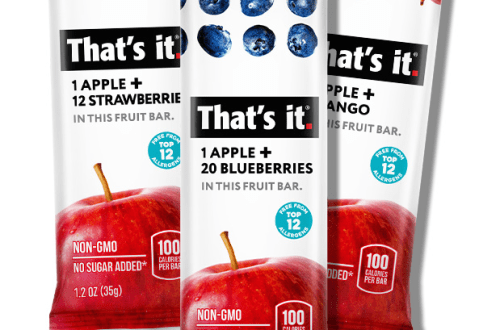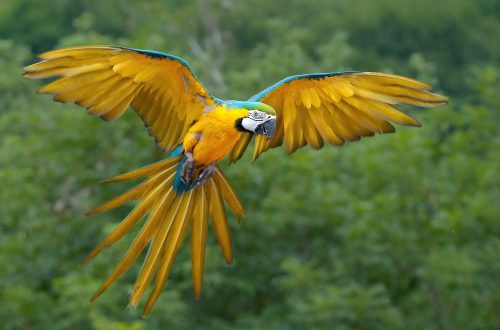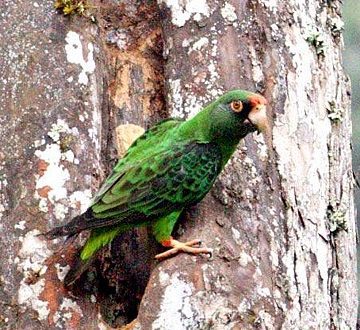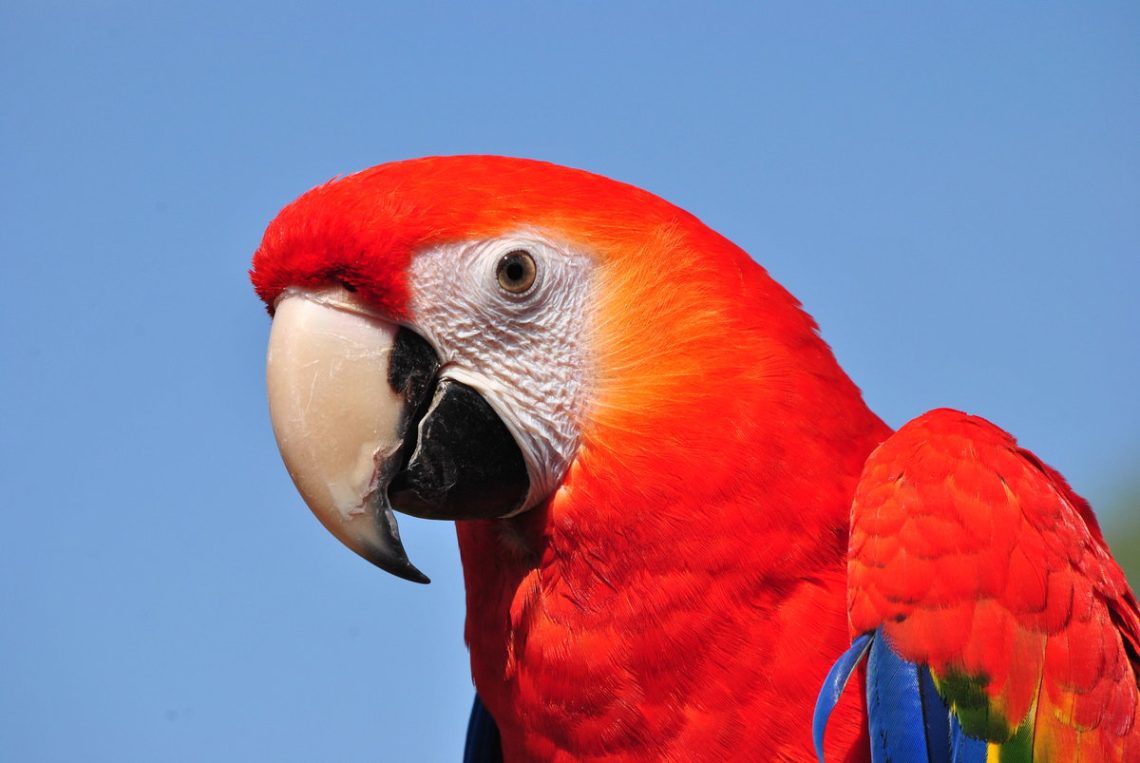
parrots
| manuk beo | Forpus passerinus |
| pesenan | Parrot |
| kulawarga | Parrot |
| balapan | parrots |
Daptar eusi
Appearance of parrots
Small short-tailed parrots with a body length of not more than 12 cm and a weight of up to 28 grams. The main color of the body is grassy green, the chest and abdomen are lighter. The rump is blue. The flight feathers of the wings are also blue-blue in color. Males have blue feathers on the inside of the wing. Females are uniform in color and usually have a lighter plumage color and yellowish plumage on the head. Most often they are larger than males. The beak and legs are flesh-colored. The eyes are brown.
Life expectancy with proper care – up to 25 years.
Habitat and life in nature of parrots
The species is one of the most common. Passerine parrots live in northern Brazil, as well as in Colombia, Venezuela, Paraguay, Guyana, Suriname and Bolivia. Also, the habitat of this species of parrots extends across the territory of Trinidad, the skeletons of the Antilles, Jamaica, Barbados and Martinique.
They mainly settle near the water or near the coast, prefer mangrove forests, low shrubs and clearings. It is found in low-lying dry and wet forests, agricultural fields and farms, in gardens and city parks. The climate in the area is tropical and subtropical with temperatures ranging from 20C to 33C, lots of rain and high humidity of 75-90% for most of the year. In nature, they feed on plant foods (seeds, fruits, berries), but the diet also contains insects and mollusks.
This species, like many other parrots, belongs to the hollow nests. However, sometimes these birds can arrange nests in less suitable places, such as termite mounds. The nesting season falls on June – November, but varies depending on the habitat. After arranging the nest, the female lays 3-7 white eggs and incubates them herself. The male feeds her all this time. The incubation period is 18 – 22 days. The chicks leave the nest at 5 weeks of age. For a while, their parents feed them.
Outside the nesting period, parrots keep in flocks of up to 100 birds.
Keeping parrots
Sparrow parrots are unpretentious parrots. By nature, they are affectionate, but sometimes stubborn birds. Curious enough. These parrots are aggressive towards other, even large birds, therefore, more than 2 birds should not be settled in one cage.
When keeping one individual, you will need to devote enough time to the pet. Sparrow parrots have the ability to imitate, but the stock is limited to 10 to 15 words. In addition to the beauty of standard colors, breeders have bred a great many unusual colors of these parrots. And also these birds breed successfully in captivity and are not noisy.
Élmu
The cage should be spacious, because with poor exercise, these birds are prone to gaining excess weight. The minimum cage length for a couple is 60 cm, the optimal one is 80-90 cm. The width and height should be 35-45 cm.
Sparrow parrots are “gnawing” species, because a wooden cage will be destroyed over time, this should be taken into account when choosing housing for birds.
The cage should have a sufficient number of perches, a couple of feeders, a drinker. It is advisable to place the feeders at the bottom of the cage so that the food is not scattered around. These birds are interested in toys with pleasure. Outside the cage, it is a good idea to organize a stand with toys, ladders and ropes, where the birds will expend their energy outside the cage.
dahar
The basis of the diet should be a grain mixture. Suitable for medium parrots. You can make your own grain mix, including several types of millet, safflower, hemp seeds, buckwheat, oats, canary seed, wheat and other types of cereals. In addition to grain feed, the diet must be enriched with fruits, cereals, vegetables, grass and branch feed.
Nuts should be offered to birds no more than once a week, as they are very high in calories.
You can also offer hand-dried dried fruits without additives. Porridges can be given undercooked, without adding salt and sugar, they can be seasoned with fruit or vegetable purees, berries.
Sprouted grain outside the nesting period can be given no more than 2-3 times a week, since it, like animal feed (eggs), can cause sexual behavior.
Offer the branches of fruit and other trees (birch, linden, willow) to the birds, after scalding them with boiling water. As well as greens allowed for birds.
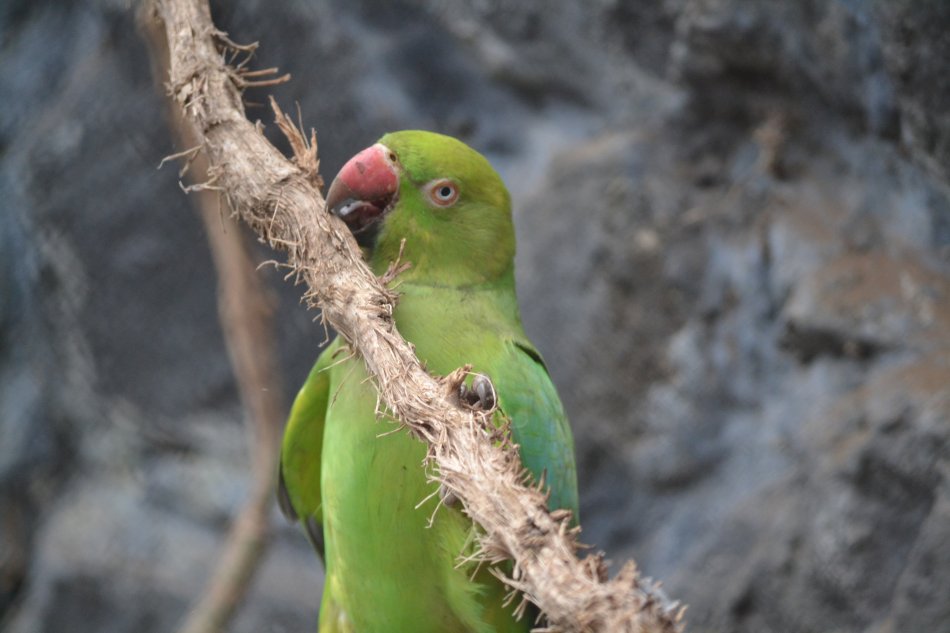



pabaranahan
For breeding parrots, you need a more spacious cage and a nesting house with dimensions of 22x20x25 cm and a 5 cm entrance.
macaw should be healthy, moderately well-fed, after molting. The birds don’t have to be related.
Before hanging the house, it is necessary to prepare the birds. To do this, protein feed of animal origin (boiled egg + carrot + crackers) and germinated grain are introduced into the diet for two weeks. Also in the diet should always be grain forage, vegetables, fruits and berries, as well as green fodder.
In addition to changing the diet, gradually increase the length of daylight hours to 14 hours. The cage should have sources of calcium – chalk, sepia and mineral mixtures. We hang a house with sawdust. You can offer the birds pre-scalded branches for building a nest.
After the first egg is laid, soft food and greens are removed from the diet and reintroduced when the first chick hatches. This is done in order not to load the liver with an excessive amount of protein and to stabilize the litter, as green food weakens.
The clutch usually contains 4-6 white eggs. The female incubates them, and the male feeds her during the incubation of the eggs. Incubation usually begins with the second egg. The first chick usually appears after 20-21 days of incubation.
Chicks grow rather slowly and leave the nest by 5-6 weeks. Parents feed them for another 2 weeks.
Do not allow more than 2 clutches per year. After breeding, the birds need to rest and replenish their spent strength.
It is better to separate the young from their parents as soon as the birds become independent, as adult birds can show aggression towards them.





